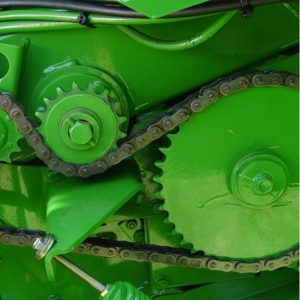Farm Safety
go.ncsu.edu/readext?999345
en Español / em Português
El inglés es el idioma de control de esta página. En la medida en que haya algún conflicto entre la traducción al inglés y la traducción, el inglés prevalece.
Al hacer clic en el enlace de traducción se activa un servicio de traducción gratuito para convertir la página al español. Al igual que con cualquier traducción por Internet, la conversión no es sensible al contexto y puede que no traduzca el texto en su significado original. NC State Extension no garantiza la exactitud del texto traducido. Por favor, tenga en cuenta que algunas aplicaciones y/o servicios pueden no funcionar como se espera cuando se traducen.
Português
Inglês é o idioma de controle desta página. Na medida que haja algum conflito entre o texto original em Inglês e a tradução, o Inglês prevalece.
Ao clicar no link de tradução, um serviço gratuito de tradução será ativado para converter a página para o Português. Como em qualquer tradução pela internet, a conversão não é sensivel ao contexto e pode não ocorrer a tradução para o significado orginal. O serviço de Extensão da Carolina do Norte (NC State Extension) não garante a exatidão do texto traduzido. Por favor, observe que algumas funções ou serviços podem não funcionar como esperado após a tradução.
English
English is the controlling language of this page. To the extent there is any conflict between the English text and the translation, English controls.
Clicking on the translation link activates a free translation service to convert the page to Spanish. As with any Internet translation, the conversion is not context-sensitive and may not translate the text to its original meaning. NC State Extension does not guarantee the accuracy of the translated text. Please note that some applications and/or services may not function as expected when translated.
Collapse ▲One of the largest threats for potential injury to farmers and workers is around farm machinery, especially any machinery that has what is called “pinch points”. A “pinch point” is an area where rotating parts move together with at least one of the parts rotating in a circular motion. These rotating parts can operate at a high rate of speed and have the potential to cause serious injury. Many pieces of farm equipment have pinch points. Chain drives, belt drives, gears, pulley drives, sprockets, and PTO shafts are very common on farms and all carry the potential for serious injury. Other examples of potential crush or pinch injury sites found on farm include: Truck and equipment doors, winches, conveyor belts, fans, augers, concrete blocks, tractor rollovers, ATVs, and unsecured materials.
Serious injury can quickly occur around farm machinery if a person’s clothes or extremities accidentally brush against a chain or belt and become entangled. This can occur without warning and all farm workers, especially youth, should be fully aware of the potential for injury before coming in contact with farm machinery. Being aware of any moving parts that can present danger and being safe at all times when working with or even near them is vital. Here are a few precautions that should be observed:
- Identify machines with possible “pinch points” and place or maintain obvious warning labels.
- Educate and train everyone who will be using or even near each piece of machinery in how to operate it properly and explain the potential dangers.
- Be sure all safety shields and guards are in place and securely mounted. If a guard or shield becomes worn or breaks off, have it replaced.
- Use caution if you are placing your hands or feet where you can’t see them.
- Always turn off any machinery and wait until all moving parts have come to a complete stop before preforming any maintenance.
- Understand and be cautious around any machine parts that could potentially release stored energy.
- Follow Lock Out/Tag Out procedures and alert everyone in the area when maintenance is taking place on machinery to prevent someone from mistakenly turning a machine back on before the maintenance has been completed.
- Wear the proper personal protective equipment (PPE) such as safety gloves, eye protection, hearing protection, and steel toe boots.
- Always wear clothes that fit well while operating machinery. Jewelry, drawstrings on hoods, long untied hair, baggy vests, jackets, or even fabrics can easily get caught in machinery.
- Always watch your footing around farm machinery. Movement should be slow and careful, never rushed.
According to the U.S. Bureau of Labor Statistics, agriculture is one of the most dangerous occupations in the country in regards to injury and death. With so much work to be done on the farm every single day, it is easy to forget that safety must be a top priority; however, it only takes a second to get caught in a situation that could cause great bodily harm. Let’s do our very best to stay safe out there and continue to feed the world.




